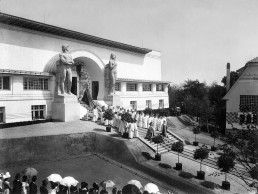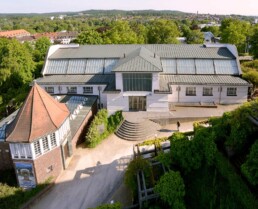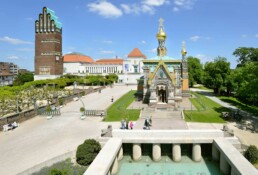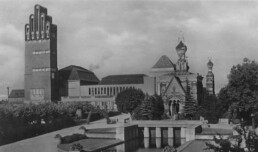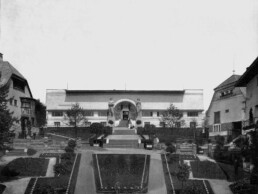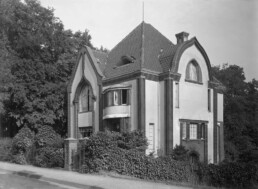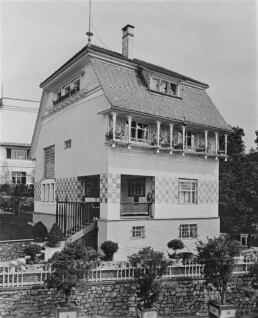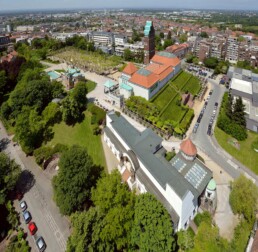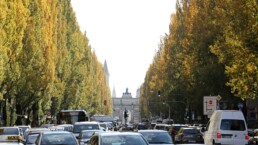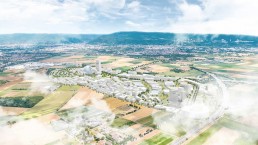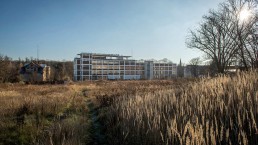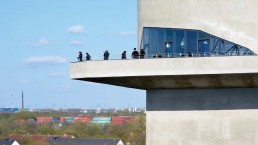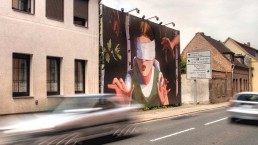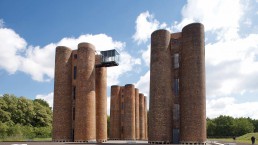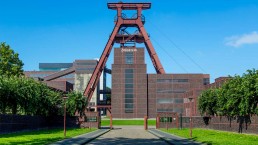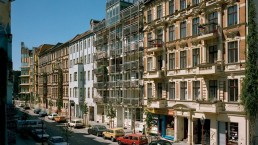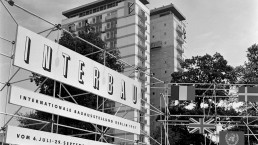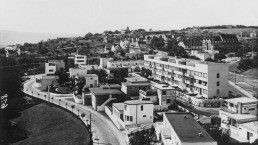Mathildenhöhe Darmstadt
A Document of German Art
At the beginning of the 19th century, the growth of industry, trade and transport led to an unprecedented concentration of people, production facilities and capital. The cities exploded. In line with the rapid industrialisation, society was changing: suddenly, everyday objects were produced almost exclusively in industrial mass production.
In 1899, the Darmstadt artists’ colony was founded at the behest of Grand Duke of and by Rhine Ernst Ludwig. A young architect, Joseph Maria Olbrich, was given the overall responsibility for planning the hilltop location at Mathildenhöhe, Darmstadt. The team sought to create a new form as a “milestone on the way to a renewal of life,” “which is not in the current fashion but points the way forward by incorporating futuristic elements” (Joseph Maria Olbrich). Mathildenhöhe was a testimony to the life reform movement of that period and received international recognition. In May 1901, the first IBAIBA Internationale Bauausstellung, entitled “Ein Dokument Deutscher Kunst” (“A Document of German Art”) was opened when the colony was completed.
The comprehensive and holistic approach is what made this building exhibition special. The urban layout, studio and residential buildings, exhibition buildings, interior design including everyday products – everything was planned together. In collaboration, architects, painters, sculptors and designers of applied art together with regional and national companies gave new form to the world around them.
From then on, the concept of holistic living accompanied building activity in the first half of the 20th century. Even in the age of market globalisation and internationalisation of urban communities, the total work of art Mathildenhöhe Darmstadt, which is currently on Germany’s list of proposals for UNESCO World Cultural Heritage, inspires us to reflect on the relationship of building, architecture, living and society.
Duration1901Project areaDarmstadtAddressMathildenhöhe DarmstadtProject participantsPeter Behrens, Rudolf Bosselt, Paul Bürck, Hans Christiansen, Ludwig Habich, Patriz Huber, Joseph Maria OlbrichSources and further information:M:AI Museum für Architektur und Ingenieurkunst NRW; IBA Hamburg (Hrsg.): IBA meets IBA. Eine Ausstellung zur 100jährigen Geschichte der Internationalen Bauausstellungen, (o.J.).Linkshttp://www.mathildenhoehe.eu
http://www.fotomarburg.de
